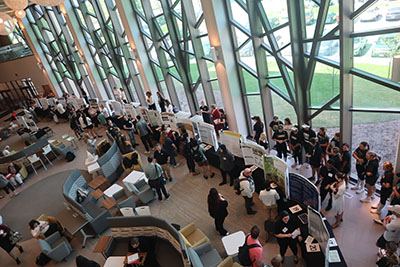Perception of a Reverse Perspective Illusion
Student Type
Undergraduate
Faculty Sponsor
Dr. Sara Bagley
Date
4-12-2022
College Affiliation
College of Science, Technology, and Health
Department
Psychology
Submission Type
Oral Presentation
Abstract
Optical illusions of depth, size, and shape occur when an image utilizes the visual system's function of size-distance invariance, resulting in the misperception of a dimension of the image. Reverse perspective illusions exploit size-distance invariance; the tendency to base an object's perceived size on its perceived distance, and vice versa; by illustrating things that are farther away from the viewing plane as larger and objects that are closer to the viewing plane as smaller. This technique effectively makes a convex 3-dimensional object appear concaved. We will describe the sensory and perceptual processes involved in viewing a reverse perspective illusion through the visual system, including the neural pathways utilized in the visual brain. In addition, we will explain a reverse perspective illusion that we created in terms of static monocular depth cues, attention and awareness, and color perception.
Recommended Citation
Busi, Maia; Kinstler, Caroline; and Shannon, Isabella, "Perception of a Reverse Perspective Illusion" (2022). 2022 Student Academic Showcase. 3.
https://digitalcommons.lindenwood.edu/src/Oral_Presentations/Session1/3
Publication Date
2022
Perception of a Reverse Perspective Illusion
Optical illusions of depth, size, and shape occur when an image utilizes the visual system's function of size-distance invariance, resulting in the misperception of a dimension of the image. Reverse perspective illusions exploit size-distance invariance; the tendency to base an object's perceived size on its perceived distance, and vice versa; by illustrating things that are farther away from the viewing plane as larger and objects that are closer to the viewing plane as smaller. This technique effectively makes a convex 3-dimensional object appear concaved. We will describe the sensory and perceptual processes involved in viewing a reverse perspective illusion through the visual system, including the neural pathways utilized in the visual brain. In addition, we will explain a reverse perspective illusion that we created in terms of static monocular depth cues, attention and awareness, and color perception.


